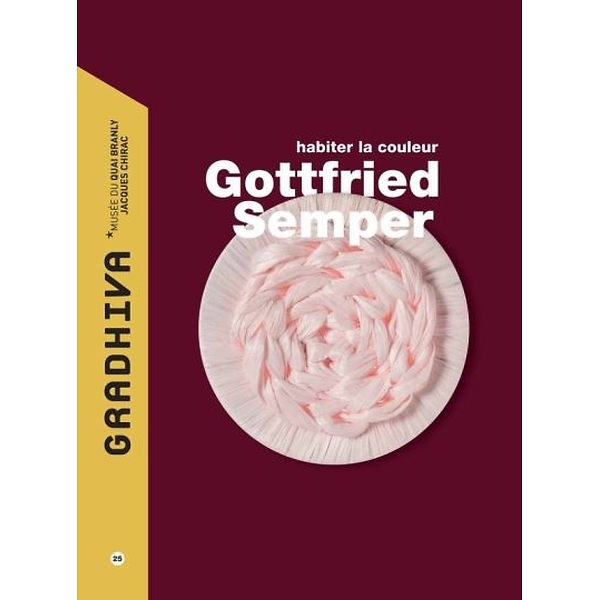Gradhiva N° 15: Gottfried Semper, inhabiting color
Musée du quai Branly - Jacques Chirac
Description
The German architect Gottfried Semper (1803-1879), who built the Dresden Opera House, the Polytechnikum in Zurich and the Burgtheater in Vienna, discovered the naturalist collections of the Jardin des Plantes in Paris in 1826. He then became interested in the relationship between plant and mineral forms and architectural ornaments, becoming a fervent defender of the "polychromy thesis". He went to Italy and then to Greece, where he examined ancient temples and buildings for three years (1830-1833) in search of vestiges of color. From his first writings, he challenged the accepted hierarchies between architecture and decoration, support and covering, form and ornament, and promoted a thought of the material which was not the antithesis but the paradoxical correlate of a thought of the immateriality of color. For Semper, the existence of polychromy in ancient architecture and sculpture was the basis for a profoundly new reinterpretation of the functions of architecture, which engaged an anthropology of human constructions, their forms and their techniques. In 1834, Semper returned to Germany where he became director of the School of Architecture and led a brilliant career, which was brutally interrupted by the revolution of 1849, in which he took an active part alongside his friend Richard Wagner; on this occasion he designed a model of barricades that has remained famous. His republican convictions led him to exile. He took refuge in Paris and then settled in London. This stay in England marked a turning point in his theory: by deepening his knowledge of the "industrial arts", he came to see in them the matrix of monumental arts and "fine arts". His reflection on polychromy then entered a new phase: the historical primacy of hanging textiles, especially carpets used as temporary partitions in the mobile dwellings of nomads, became the key to architectural polychromy; wall paintings and other colored cladding decorations carried in their forms and arrangement the memory of this textile origin. This decisive discovery is set out in the two volumes of Semper's major text, Der Stil (1860 and 1863). The first, Textile Art, studies the relationship between ornamental decoration and building structure in different cultures and several periods: "New Zealand and Polynesia; China; India; Mesopotamia; Phoenicia and Judea; Egypt. Old and New Empire; Asia Minor; Greece; Rome; Christian era in the West, in the East; Renaissance". This expansion of the reference space of the history of architecture made Semper say that he was one of the first heralds of the "primitive arts". This issue of Gradhiva intends to identify Semper's contributions to an anthropology of architecture and habitat, and to initiate a new reading of Der Stil, from which we deliver unpublished excerpts of the first French translation, currently in preparation.
Product information
- Publication Year
- 2017
- Dimensions
- 20,10 x 27,00 x 1,70 cm
- Number of Pages
- 276
- EAN
- 9782357440951

